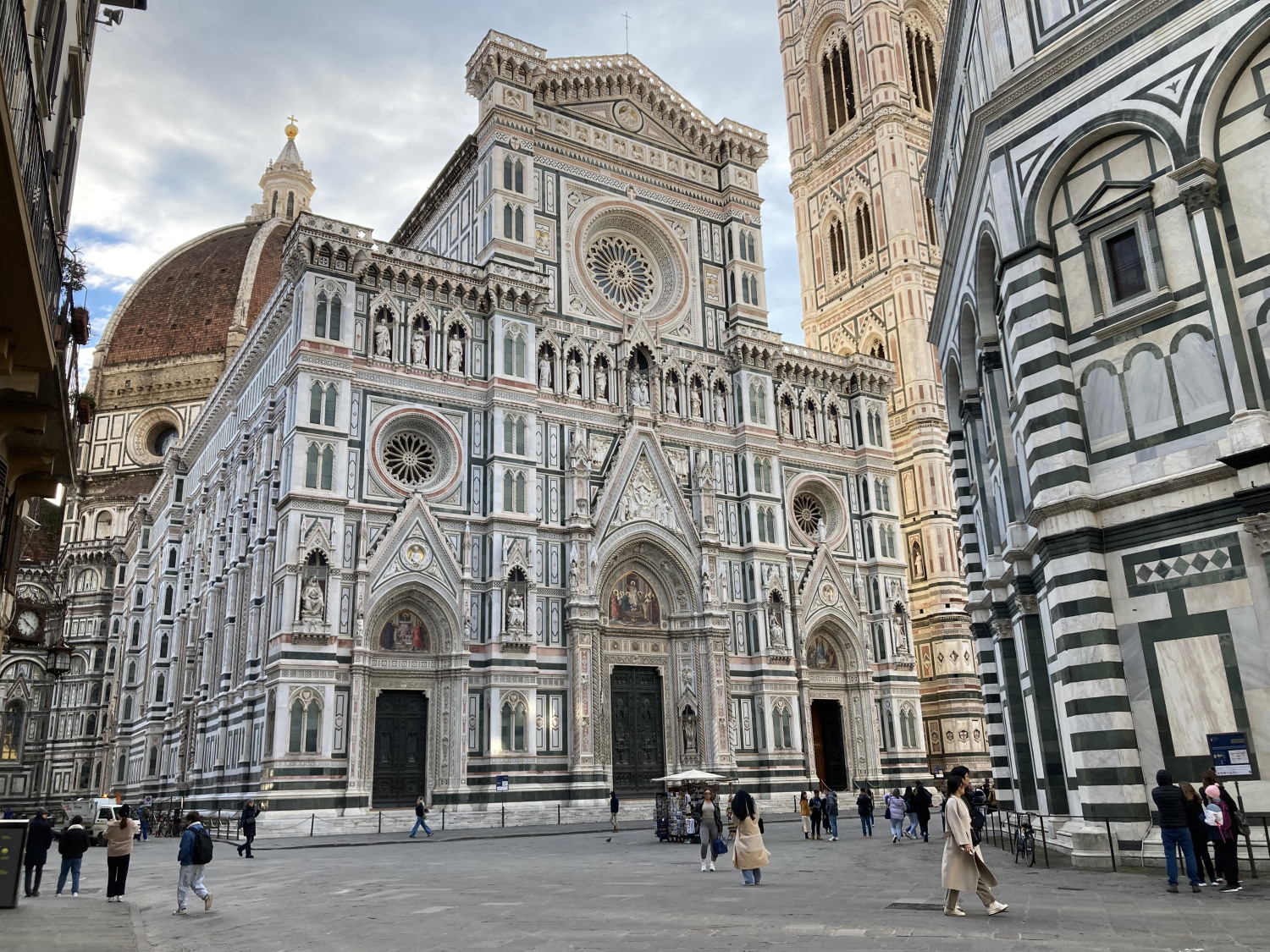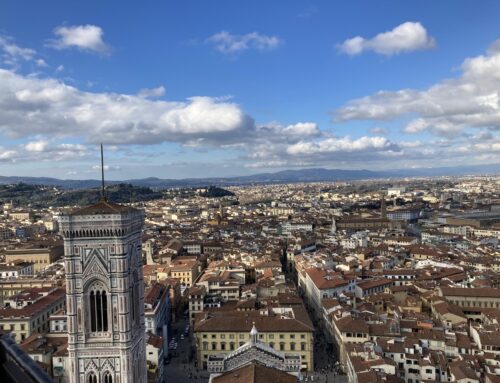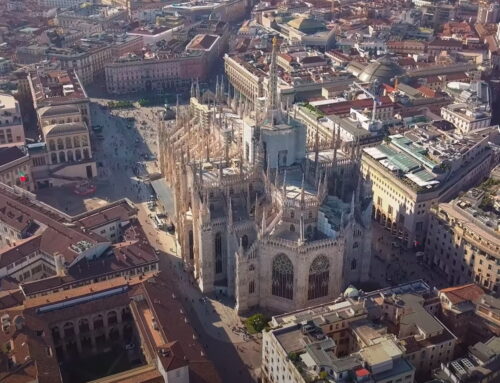Everything you need to know about
traveling to Enchanting Tuscany, Italy
Tuscany is one of the most popular regions for visitors in Italy. The capital of the region is Florence, home of the Renaissance, and a huge attraction for foreign travelers.
Tuscany is also known for its winemaking, beautiful countryside, charming small towns, and let’s not forget Pisa!
We put this guide together for travelers who have Tuscany on their bucket list for places to visit.
Let’s get to it!
Tuscany location and geography
Tuscany is one of the twenty regions of Italy and is located near the heart of Italy. The region covers just over 8,800 square miles and has a population of just over 3.7 million people.
The capital city of Tuscany is Florence, which has a population of about 360,000 people as of 2023. Florence is the 8th most visited city in Italy, but ranks 4th among foreign visitors.

Tuscany is bordered by the Liguria region to the northwest, Emilia-Romagna to the north, Lazio to the south and Marche and Umbria to the east. Tuscany has a coastline off the Ligurian and Tyrrhenian Seas to the west of Italy.
Several islands off the west coast of Italy are also part of the Tuscany region, including the island of Elba, where Napoleon was exiled in 1814.
The topography of most of Tuscany is best described as hilly, while a significant portion of the region is mountainous.
Plains make up only about 8% of the Tuscan landscape, most of situated around the Arno River. Florence and Pisa are both situated along the banks of the Arno.
The Arno originates in the Appenine Mountains, heads south toward Arezzo, then to the west and it empties into the Tyrrhenian Sea to the west of Pisa.
Tuscany Climate
Similar to the Ligurian region to the north, the climate along Tuscany’s coast is more mild in both the winter and summer months than the interior.
Summers in Tuscany around Florence can be quite hot, with an average high temperature of 90 degrees in early August. Winters are reasonably mild with an average high of 50 in January.
These temperatures compare to Pisa closer to the coast, where the average high reaches 86 in the summer and the average high in January is 52.
Ultimately, the temperature ranges in the interior of Tuscany have allowed it to be one of the primary agricultural regions in Italy.
A brief history of Tuscany
This brief history is taken from the Wikipedia page for Tuscany.

Etruscan Art – Photo by Yann Forget
Following the Bronze Age, and at the beginning of the Iron Age, starting around 700 BC, the Etruscans created the first civilized culture in the Tuscan region.
The Etruscan population grew to fill the area between the Arno River near modern day Florence and the Tiber River that runs through Rome. It grew large enough to build infrastructure for transportation among its communities and developed its agriculture along with mining operations.
The Etruscan civilization reached its peak by 600 BC before succumbing to Roman rule by about the 1st century BC.
After absorbing Etruria, Rome subsequently established cities in Pisa, Lucca, Siena and Florence, and brought with it new technologies, including the introduction of its aqueduct system, sewers and paved roads.
By the 5th century AD, the Roman Empire collapsed and Tuscany was briefly overrun by the barbarian hordes.
The area was reconquered by the Eastern Roman Empire, which then became the Byzantine Empire.
The Lombards, a Germanic people from the north took over much of the area in the 6th century and Lucca became their capital in the region. This continued into the late 8th century.
During medieval times, two factions arose that split the Tuscan population; one faction supported the Papacy while the other supported the Holy Roman Empire.
These factions led to the rise of several rich and powerful communities in Tuscany, including in Arezzo, Florence, Lucca, Pisa and Siena. Eventually, Florence became the cultural center of Tuscany.
The most powerful family in Florence and all of Tuscany was the Medici family, whose legacy remains visible in the art and architecture throughout Florence.
In 1348, plague hit the region as it had ravaged the European continent. An estimated 70% of the population in Tuscany was killed, including over 50% of the population in Florence in the first year.
Tuscany and The Renaissance
Tuscany, and in particular, Florence is known as being the birthplace of the Renaissance, which marked the transition from the Middle Ages to modern times.
It was during this time that Florence exerted its dominance over the region, and Florence itself was dominated by the Medici family, beginning in the early 15th century.
The Renaissance ushered in great social and cultural change and significant achievements and advancements occurred in the arts, literature, science and exploration.
By about the mid-1700’s, the Medici family effectively died out and Tuscany was transferred to the Duke of Lorraine, and the Lorena ruled Tuscany until it became part of the Kingdom of Italy in the 1860s.
After WWII, Italy became the Republic of Italy and Tuscany’s regional government was established in 1970.
Today, Tuscany continues to enjoy its status as one of the cultural centers of Italy.
What you should know before you go to Tuscany
Here are some tidbits that you should know before traveling to Tuscany, from the obvious to the not-so-obvious.
Currency: Euro
Language: Italian of course. While English is spoken in the major cities, such as Florence and Pisa, you will find less English spoken in many of the smaller towns. We highly recommend that you learn some Italian before you go. Many Italians will appreciate the effort. Rosetta Stone is a popular app for learning Italian.
Visa Requirements: For stays under 90 days, you do not need a Visa, but you will need your passport.
Electricity: Europe has different electrical outlets than what we have here in the US, so you will need an adapter.
Car Rentals: Unless you only intend to stay in the major cities, the best way to get around Tuscany is by car. However, driving through the cities and small towns themselves is extremely tricky. Therefore, if you do intend to rent a car, you will want to be sure your accommodations have parking on site, and are close to public transportation, or close to primary sites you want to see. You’ll need an international driver permit along with your driver’s license. If you do not have an international driver’s permit, head on over to your nearest AAA office.
For finding the best deals on rental cars, check out Discover Cars.
Flying to Tuscany: Both Florence and Pisa have international airports, but they are small, and there are no direct flights from the US to these airports. It’s more expensive, but we prefer flying direct to Rome’s airport, and then hop a train to Florence. This helps avoid any snafus caused by delays and missed connections.
However, if cost is a concern, you can find cheaper flight alternatives here. You can also check out our tips for flying to Italy.
If you don’t intend to rent a car, and need transportation to, check out Kiwi Taxis.
The Trains: A great way to get around Tuscany between the major towns, such as Florence, Pisa and Siena, is by train. This is also a great way to get to other major cities in Italy that are just a couple hours away. The train between Florence and Rome takes about 90 minutes.
Travel Insurance: Anytime you plan on a trip overseas, you should consider purchasing travel insurance. Travel insurance can cover the cost of medical emergencies, lost baggage, unexpected trip cancellations, etc.
Travel Insurance Master can help you find the coverage you need for your trip.
When is the best time to go to Tuscany?

Lerici
This will depend upon the activities you have planned for your trip.
For instance, if you want to head over to the Cinque Terre on the west coast and maybe have the opportunity to swim in the beautiful Mediterranean water, you’ll want to go in summer into about late September. Keep in mind, there will be heavier crowds in those towns.
Check out our thoughts on the best seaside towns in Italy… you’ll find a lesser known spot within just a couple hours of Florence that is absolutely stunning!
If swimming is not on the agenda, it is highly recommended you avoid traveling to Tuscany in July and August, as it can get quite hot in the interior areas of the region.
Otherwise, just about any time is a great time to visit Tuscany. As indicated earlier, the average high temperature in January is about 50 degrees. That’s not too bad when you are exploring Florence and any of the other towns in the region.
Keep in mind, you’ll likely find fairly heavy crowds throughout the year in Florence, due to its popularity as a destination.
Major Destinations in Tuscany

Ponte Vecchio and Uffizi Gallery
Florence is obviously the primary destination to visit in Tuscany. If you are traveling there, try to spend at least three or four days.
The best way to see Florence is to simply wander. It is a very walkable city.
Obviously, there are a number of major sites in Florence you will want to visit. These include…
- the Duomo di Firenze and the surrounding piazza
- Ponte Vecchio bridge
- Accademia Gallery, home of Michelangelo’s David
- Uffizi Gallery
- and more.
The other main cities in Tuscany to visit are Pisa, Arezzo, and Siena. The train is a great way to get to all of these cities from Florence, although there is no high speed train service to Siena.
Some of the popular small towns to visit are mainly in the southern part of Tuscany and include San Gimignano, Montepulciano and Montalcino. The best way to get to these towns is by car.
While the villages of the Cinque Terre are in Liguria, you can easily reach them by train from Florence as well.
The bottom line is you can devote an entire week to ten day trip in Tuscany and always find something to do, including a wine tour.
Because of the availability of high speed rail, a visit to Tuscany can easily be included in a longer trip that includes Rome to the south and Bologna and Venice.
What are you waiting for? Start planning your trip now!





